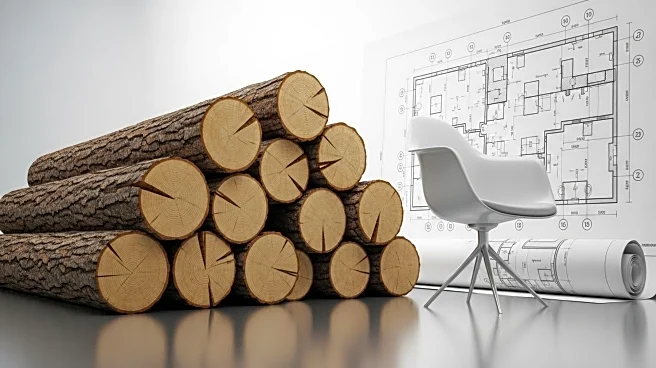What is the story about?
What's Happening?
President Trump has introduced new tariffs on timber and furniture imports, with rates up to 25%. These tariffs are intended to boost U.S. industries and protect national security. The move is likely to increase construction costs in the U.S., impacting the housing market. Canada, a major supplier of lumber to the U.S., will be particularly affected, facing combined tariffs of 45%. The tariffs are part of Trump's broader trade strategy, which has caused disruptions in global markets.
Why It's Important?
The tariffs could lead to higher construction costs, affecting the affordability of housing in the U.S. This may impact homebuyers and the housing market, which is already facing challenges. The tariffs also reflect ongoing trade tensions with countries like Canada and China, influencing international trade dynamics and economic relations.
What's Next?
The tariffs are expected to impact consumer prices and industry costs, with potential implications for the housing market. Stakeholders may seek to negotiate trade agreements to mitigate the impact of these tariffs. The ongoing trade tensions with China could lead to further economic and diplomatic developments, influencing global trade dynamics.
Beyond the Headlines
The tariffs highlight the complex interplay between trade policy and domestic economic conditions. They raise questions about the balance between protecting domestic industries and maintaining affordable consumer prices. The long-term effects on the housing market and consumer spending could influence broader economic trends and policy decisions.
AI Generated Content
Do you find this article useful?














